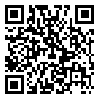Volume 11, Issue 2 (9-2018)
ijhe 2018, 11(2): 157-168 |
Back to browse issues page
Download citation:
BibTeX | RIS | EndNote | Medlars | ProCite | Reference Manager | RefWorks
Send citation to:



BibTeX | RIS | EndNote | Medlars | ProCite | Reference Manager | RefWorks
Send citation to:
Baghaie A.
Effect of applying Shazand municipal compost waste and Saveh pomegranate peel biochar on decreasing Pb availability in soil and Sorghum plant
. ijhe 2018; 11 (2) :157-168
URL: http://ijhe.tums.ac.ir/article-1-5967-en.html
URL: http://ijhe.tums.ac.ir/article-1-5967-en.html
Department of Soil Science, Arak Branch, Islamic Azad University, Arak, Iran , a-baghaie@iau-arak.ac.ir
Abstract: (3716 Views)
Background and Objective: Today, landfill management of municipal waste and soil pollution with heavy metals are major environmental problems. This research was conducted to evaluate the effect of Shazand municipal waste compost and Saveh pomegranate peel biochar on decreasing Pb availability in soil and sorghum plant.
Materials and Methods: Treatments consisted of applying Shazand municipal waste compost (0, 10 and 20 ton/ha) and Saveh pomegranate peel biochar (0 and 15 g/kg) in a Pb polluted soil (0, 600, 800 and 1000 mg Pb/kg soil). After 8 weeks of sorghum planting (Kimya CV.), the soil physio-chemical properties and soil and plant Pb concentration were measured.
Results: Applying 20 ton/ha municipal waste compost with 15 g/kg biochar increased soil pH by 0.4 units and decreased soil Pb availability by 11%. The similar results were observed for the root and shoot Pb concentrations, when the same amount of manure in a Pb polluted soil was applied (1000mg Pb/kg soil) that decreased the root and shoot Pb concentration by 1.8 and 2.2 times, respectively.
Conclusion: The result of this experiment showed that applying Shazand municipal waste compost and biochar can increase soil sorption properties and decrease soil or plant Pb concentration. However, the role of these organic amendments on supplying plant nutritional needs cannot be ignored.
Materials and Methods: Treatments consisted of applying Shazand municipal waste compost (0, 10 and 20 ton/ha) and Saveh pomegranate peel biochar (0 and 15 g/kg) in a Pb polluted soil (0, 600, 800 and 1000 mg Pb/kg soil). After 8 weeks of sorghum planting (Kimya CV.), the soil physio-chemical properties and soil and plant Pb concentration were measured.
Results: Applying 20 ton/ha municipal waste compost with 15 g/kg biochar increased soil pH by 0.4 units and decreased soil Pb availability by 11%. The similar results were observed for the root and shoot Pb concentrations, when the same amount of manure in a Pb polluted soil was applied (1000mg Pb/kg soil) that decreased the root and shoot Pb concentration by 1.8 and 2.2 times, respectively.
Conclusion: The result of this experiment showed that applying Shazand municipal waste compost and biochar can increase soil sorption properties and decrease soil or plant Pb concentration. However, the role of these organic amendments on supplying plant nutritional needs cannot be ignored.
Type of Study: Research |
Subject:
General
Received: 2017/10/10 | Accepted: 2018/06/11 | Published: 2018/09/22
Received: 2017/10/10 | Accepted: 2018/06/11 | Published: 2018/09/22
Send email to the article author
| Rights and Permissions | |
 |
This work is licensed under a Creative Commons Attribution-NonCommercial 4.0 International License. |





